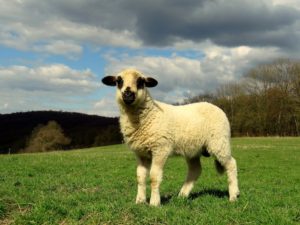 I am very excited to be starting this second in a series of 3 value added sheep articles, especially this time of year. Value Added Sheep Part 1 can be found here. Many producers are getting ready to start their lambing, and in fact a friend of mine has several lambs on the ground.
I am very excited to be starting this second in a series of 3 value added sheep articles, especially this time of year. Value Added Sheep Part 1 can be found here. Many producers are getting ready to start their lambing, and in fact a friend of mine has several lambs on the ground.
I want to focus on value adding to the meat breeds and my own experience, and ideas for you to be able to market your small farm sheep in the way that will make you the most money for your operation.
First of all in small operations where you can easily see every single animal on a daily basis the first thing you should look into is becoming a Certified Organic, or an organically raised flock. This will let you add dollars automatically to your product and market your meat and meat products in a different way. Every way is good but why not do away with any chemicals you are now using. There are many different herbs and ways to deal with many health issues without chemicals.
Secondly you should find out what your state regulations are on selling meat and the inspection process you will need to go through. Some states require only that you have the animal butchered in a facility that has a federal or state inspector present. Some states may have other permitting requirements, or registries.
You then need to plan on how to have lambs ready either on a seasonal schedule, or on a year round basis. This will require you to do some research and implement a birthing and feeding program. The standard rate of gain for lambs is .6 to .8 lb. per day. The weight you want to target with your lamb is 100-140 lbs according to this PDF from;
University of Wisconsin Extension.
Gestation of sheep is 5 months give or take a couple of days. Then it will take approximately 6 more months to fatten them to butcher age. So to have lambs ready for an April Easter market you will need to breed them in May of the previous year. They will lamb in October, and be ready in April. This means that you will have to feed them heavier during the winter if you live in a cold climate, which will raise your feed costs of a spring butcher lamb compared to a fall butcher lamb. However the market price will easily cover that cost.
The final part of marketing your meat is to find customers. This can be as easy as posting ads on an ad board online like craigslist, or a Facebook you will need to check their regulations again. You should start a Facebook page and you can also pay a small fee to make sure people in your area are seeing your ad.
Go to farmers markets, and put out flyers. You can also contact resturants in your area and see if you can sell direct to them.
You are now on your way to selling direct farm to table and not only cutting out the middle man but delivering a quality healthy product to consumers that are looking for healthy meat that they know where it comes from.